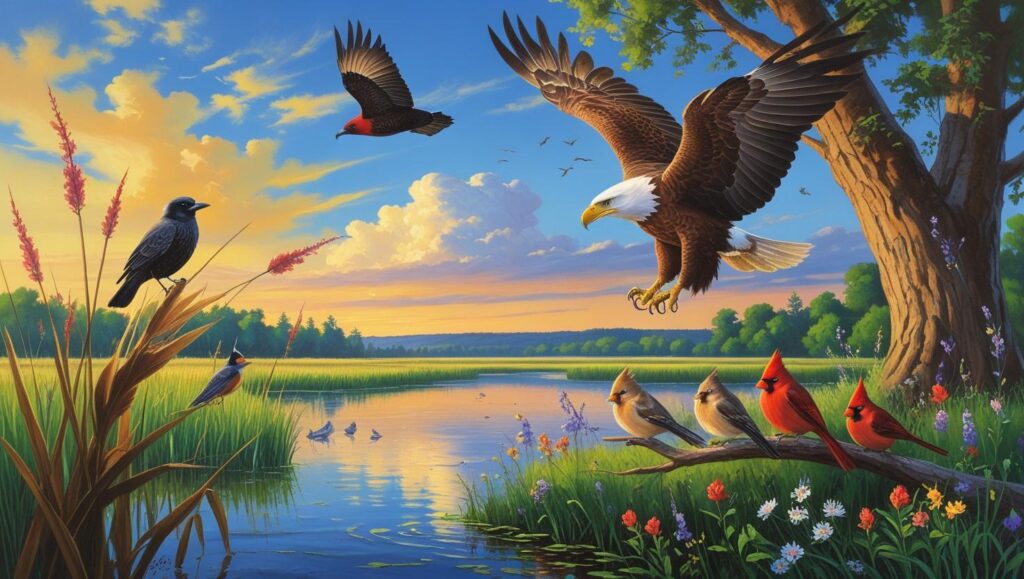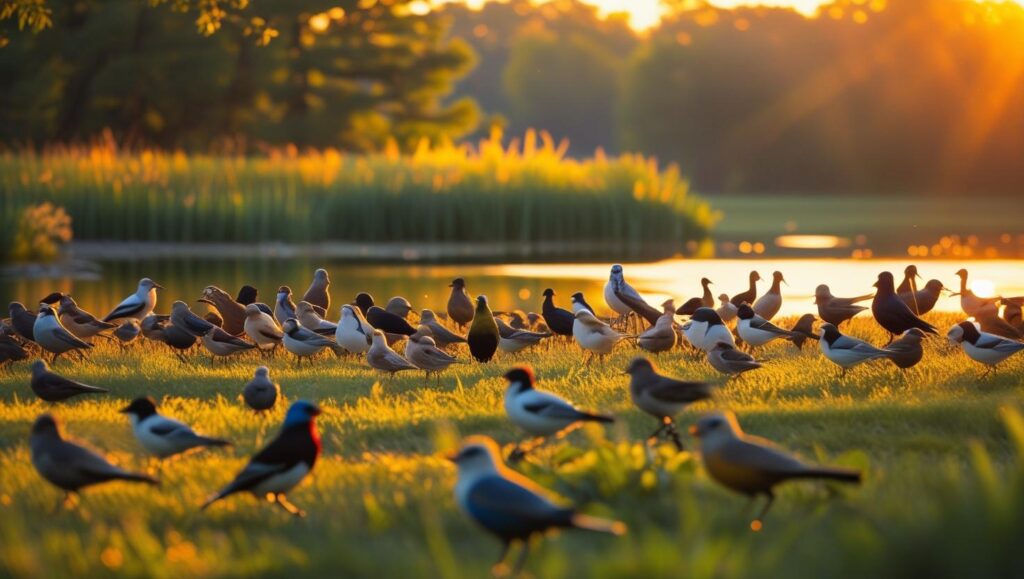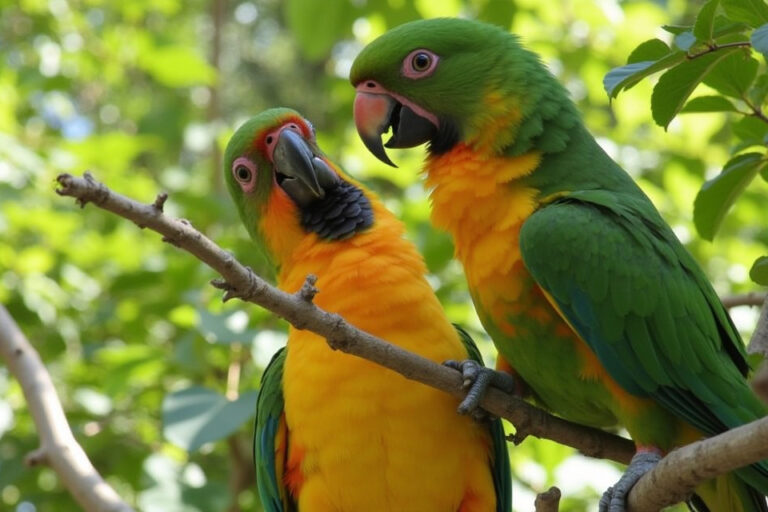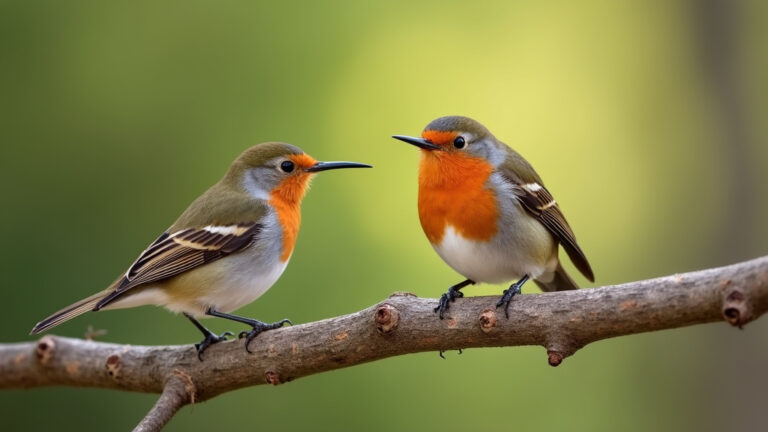Backyard Birds of the Midwest
American Goldfinch, the cheerful Blue Jay, or a quiet Mourning Dove, the Backyard Birds of the Midwest offer endless beauty and wonder.
Imagine stepping outside on a crisp, quiet morning. You’re sipping your coffee, and suddenly, the bright red flash of a Northern Cardinal catches your eye while an energetic Downy Woodpecker taps softly on a tree nearby.
These little moments of discovery make backyard birding in the Midwest so special. Whether you’re a seasoned birder or someone who just loves the melody of chirping songbirds, the Backyard Birds of the Midwest offer endless joy and connection to nature.
The Midwest is a haven for birds, thanks to its mix of prairies, forests, wetlands, and suburban backyards.
The variety of species here is staggering—and the best part? You don’t need to travel far to see them. With a pair of binoculars and some curiosity, your backyard can become a stage for one of nature’s most captivating shows.
Table of Contents
What Makes the Midwest a Bird Paradise?

The Midwest’s diverse landscapes make it the perfect place for birds to thrive. From forested areas to sprawling wetlands and urban parks, this region offers endless habitats for resident and migrating bird species. Birds that prefer dense woods live a short distance from others that enjoy open fields.
Seasons also play a huge role in the birdwatching experience. While winter brings hardy species like the Dark-Eyed Junco, spring and summer usher in a flurry of migratory birds such as robins and swallows. Here’s what birdwatchers can look forward to throughout the year:
| Season | Birding Highlights | Examples of Birds |
|---|---|---|
| Spring | Migratory birds arriving | American Robin, Purple Martin |
| Summer | Nesting and foraging birds | Northern Cardinal, American Goldfinch |
| Fall | Birds preparing for migration | White-Throated Sparrow, Blue Jay |
| Winter | Cold-hardy species | Dark-Eyed Junco, Mourning Dove |
This rotating cast of feathered characters ensures there’s always something new to discover.
Common Backyard Birds in the Midwest

Curious about the birds visiting your backyard? The Midwest is home to some fascinating feathered friends, each with unique traits and behaviors. Here are a few highlights to help you identify some local favorites.
Year-Round Residents
These hardy birds stick around regardless of the season, so you’ll often get to know their habits and personalities well.
- Northern Cardinal
With its bold red plumage and sweet whistles, the Northern Cardinal is a backyard icon. These birds love sunflower seeds, so keep your feeders stocked, and they’ll keep coming back.- Fun fact: Cardinals mate for life and can often be seen in pairs.
- Blue Jay
Blue Jays bring flair and personality to any yard. Their vivid blue feathers and clever antics make them stand out. They’re known to stash food like peanuts and acorns for later.- Favorite treats: Peanuts, sunflower seeds, and suet will win them over every time.
- Downy Woodpecker
This small but mighty bird is North America’s tiniest woodpecker. You’ll often hear its rhythmic tapping sound as it searches for insects. Suet and peanut butter-based feeds are the way to their hearts. - Mourning Dove
These gentle birds with soft “coo-OO-oo” sounds bring calmness to any space. They’re ground feeders, and scattering seeds will keep them nearby.
Seasonal Visitors
Migratory birds often make the Midwest their seasonal home, and spotting these visitors feels like an absolute treat.
- American Robin
Famous for its rusty belly and cheerful song, the American Robin is a staple of spring. Catch them hopping across lawns in search of worms. - American Goldfinch
These bright yellow beauties are most active in the summer, though they’re present year-round. Provide nyjer or thistle seeds, and they’ll quickly become regulars. - Dark-Eyed Junco
Nicknamed “snowbirds,” Dark-Eyed Juncos bring winter charm. They forage seeds on snowy grounds, a sight that never gets old.
And for the birdwatchers eager to dig deeper, there are lesser-known yet equally fascinating species like the White-Breasted Nuthatch, the friendly House Finch, and the striking Red-Bellied Woodpecker. Introduce these guests to your yard, and your birding adventures will truly take flight.
Read More: How To Set Up Bird Feeders: 10 Tips and Step-by-Step Guide
Creating a Bird-Friendly Backyard
Now that you know who’s out there, why not make your backyard their favorite hangout? Creating a bird-friendly space is not only gratifying but also a great way to help local birds thrive.
Essential Birding Basics
To attract birds, focus on meeting their three basic needs—food, water, and shelter.
Food Options Tailored to Midwest Birds
Birds have preferences. Stock your yard with the right treats, and your feeders will become the hottest dining spot in town.
- Seed Types:
- Black-oil sunflower seeds are nearly every bird’s favorite.
- Nyjer seeds entice goldfinches and siskins.
- Suet cakes and peanuts attract woodpeckers, chickadees, and jays.
- Feeder Varieties:
- Use tube feeders for smaller birds like finches.
- Hopper and platform feeders work well for larger birds like jays and doves.
| Food Type | Birds Attracted |
|---|---|
| Black-oil sunflower seeds | Cardinals, finches, chickadees |
| Nyjer seeds | Goldfinches, siskins |
| Suet cakes | Woodpeckers, nuthatches |
| Peanuts | Blue Jays, Northern Cardinals |
Water Features
Birds need water not just for drinking but also for bathing. Adding a birdbath or small fountain is a surefire way to attract more visitors.
- Choose a wide, shallow basin for safety.
- Opt for moving water like a fountain or dripper, which birds find irresistible.
During the Midwest’s icy winters, heated birdbaths are essential.
Shelter and Homes
Native plants make excellent shelters, and birdhouses can provide safe nesting spaces. For example, oak trees attract woodpeckers, while coneflowers provide seeds for goldfinches.
Adapting to the Seasons
The needs of birds will vary throughout the year. Adjust your setup seasonally to meet their changing requirements:
- Winter: Provide suet and heated water sources to help birds survive the cold.
- Spring: Offer nesting materials and set up birdhouses for bluebirds and chickadees.
- Summer: Keep feeders stocked and birdbaths clean to prepare birds for breeding.
- Fall: Allow plants to go to seed and add nuts for migrating birds.
Avoid These Common Mistakes
Some common errors can discourage birds from visiting your yard. Avoid these slips to give your feathered friends a safe and welcoming space:
- Dirty feeders can spread diseases. Clean feeders and birdbaths regularly.
- Poor-quality seed mixes with fillers like millet can turn birds away. Focus on nutritious options.
- Window placement hazards can cause collisions. Position feeders wisely to keep birds safe.
FAQs About Midwest Backyard Birding
Q1. Can I attract birds in all seasons?
Yes! With food, water, and the right habitat, your backyard can remain bustling year-round.
Q2. Will feeding birds make them dependent?
No. Birds rely on multiple food sources, so feeding them simply supplements what they already find.
Q3. How do I keep squirrels from raiding my feeders?
Use squirrel-proof feeders and consider adding baffles to feeder poles.
Q4. Are all bird-friendly plants native?
Not always, but native plants are best for local ecosystems.
Final Thoughts
Whether it’s the vibrant American Goldfinch, the cheerful Blue Jay, or a quiet Mourning Dove, the Backyard Birds of the Midwest offer endless beauty and wonder. Building a bird-friendly yard lets you enjoy their antics and songs while supporting wildlife.
All you need is some seed, a splash of water, and a dash of patience. Soon enough, your backyard will be buzzing with activity, proving that nature’s best entertainment is just outside your window. Happy birding!






